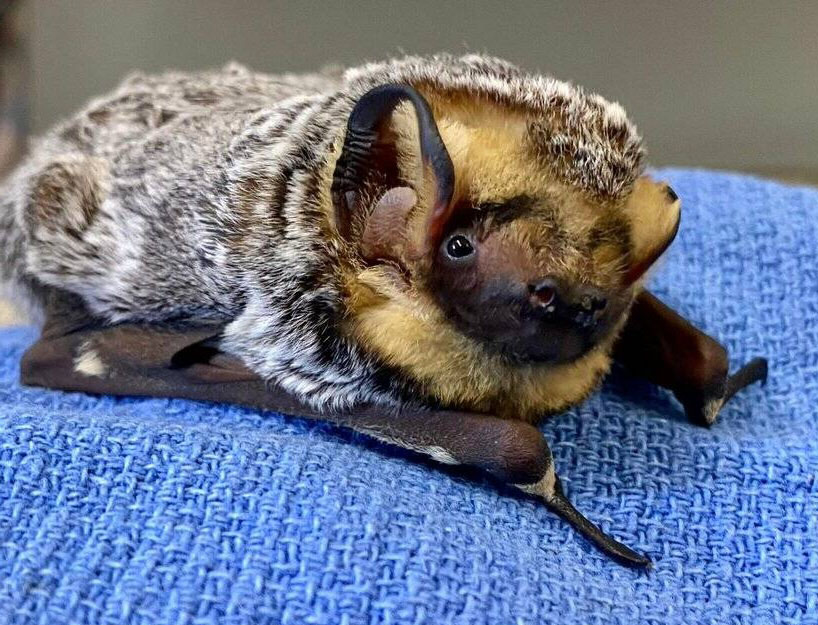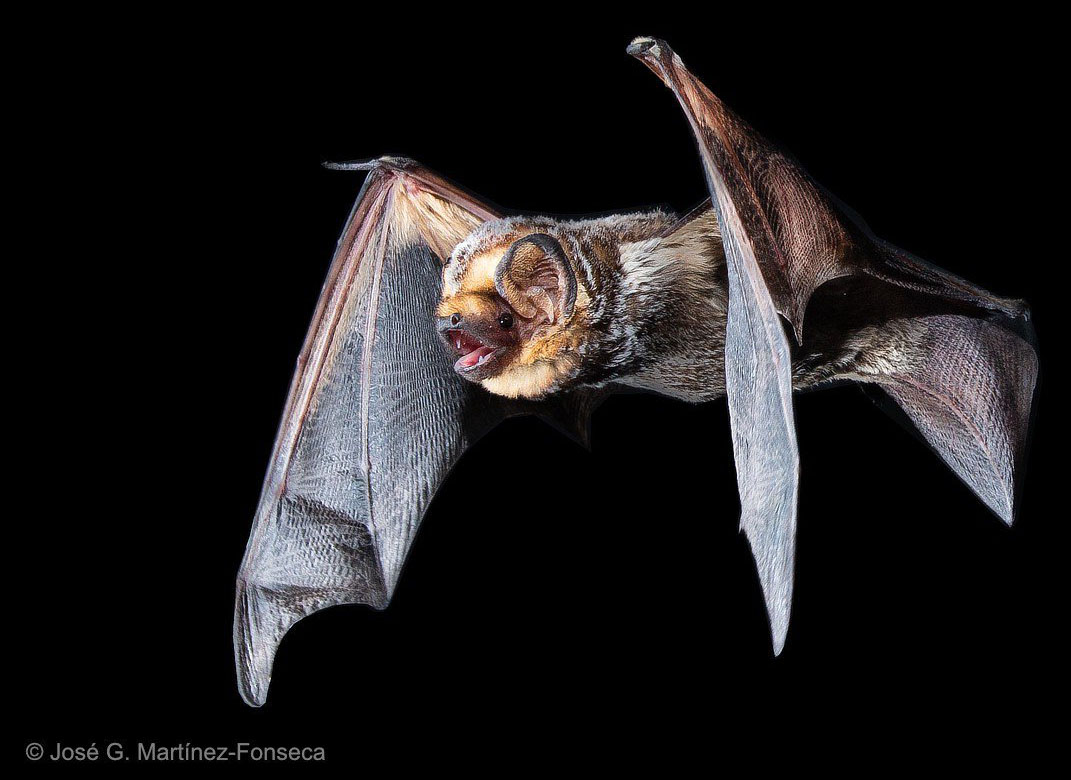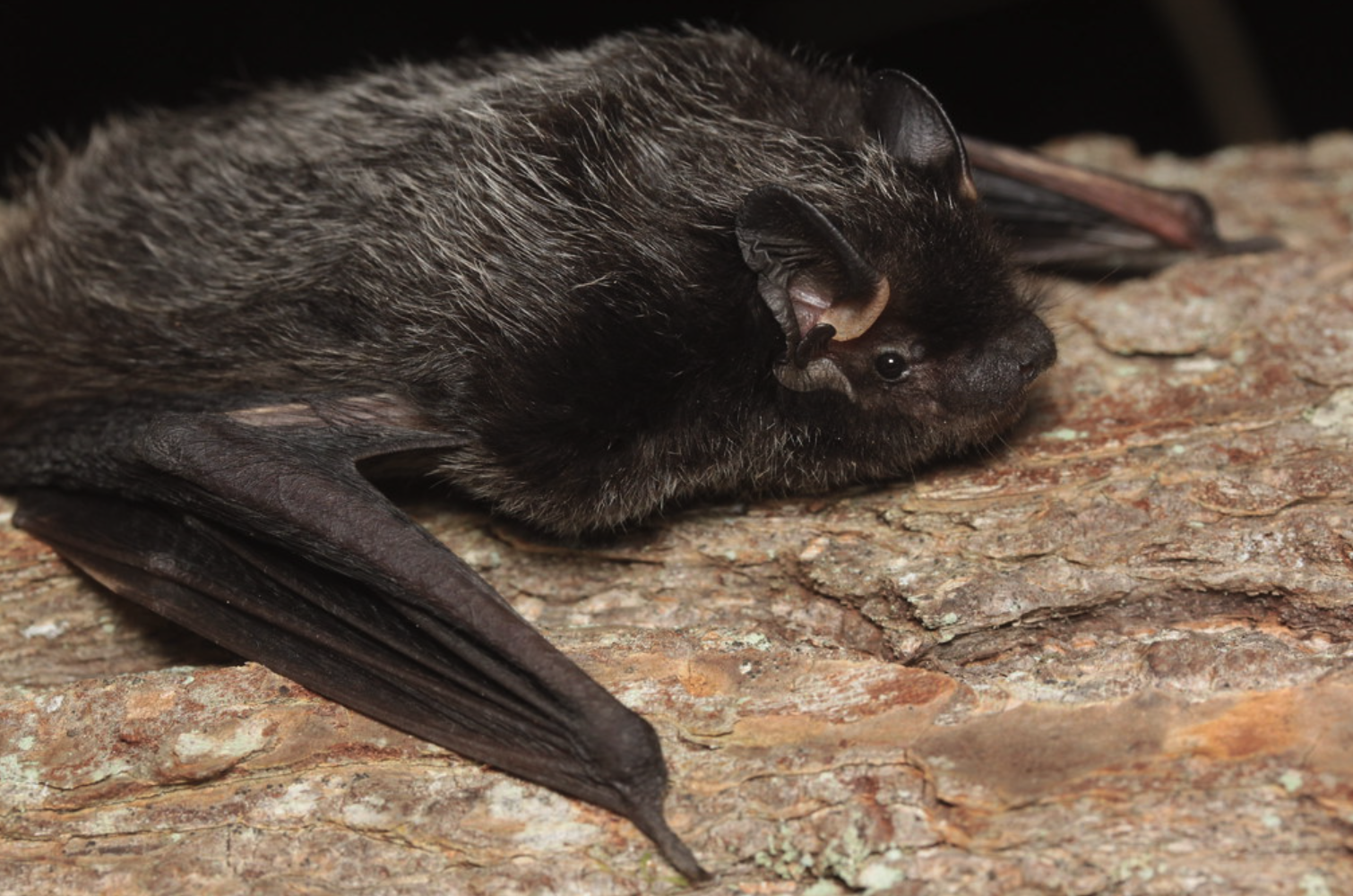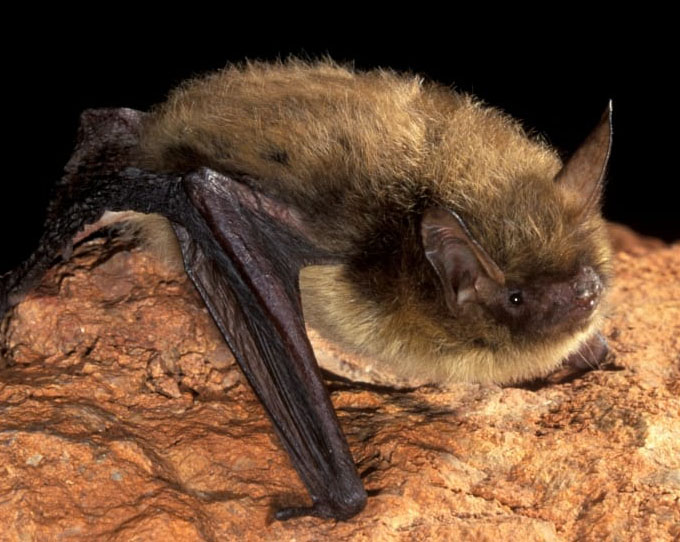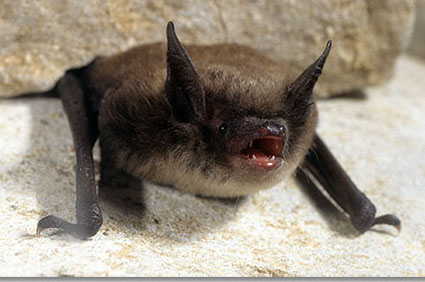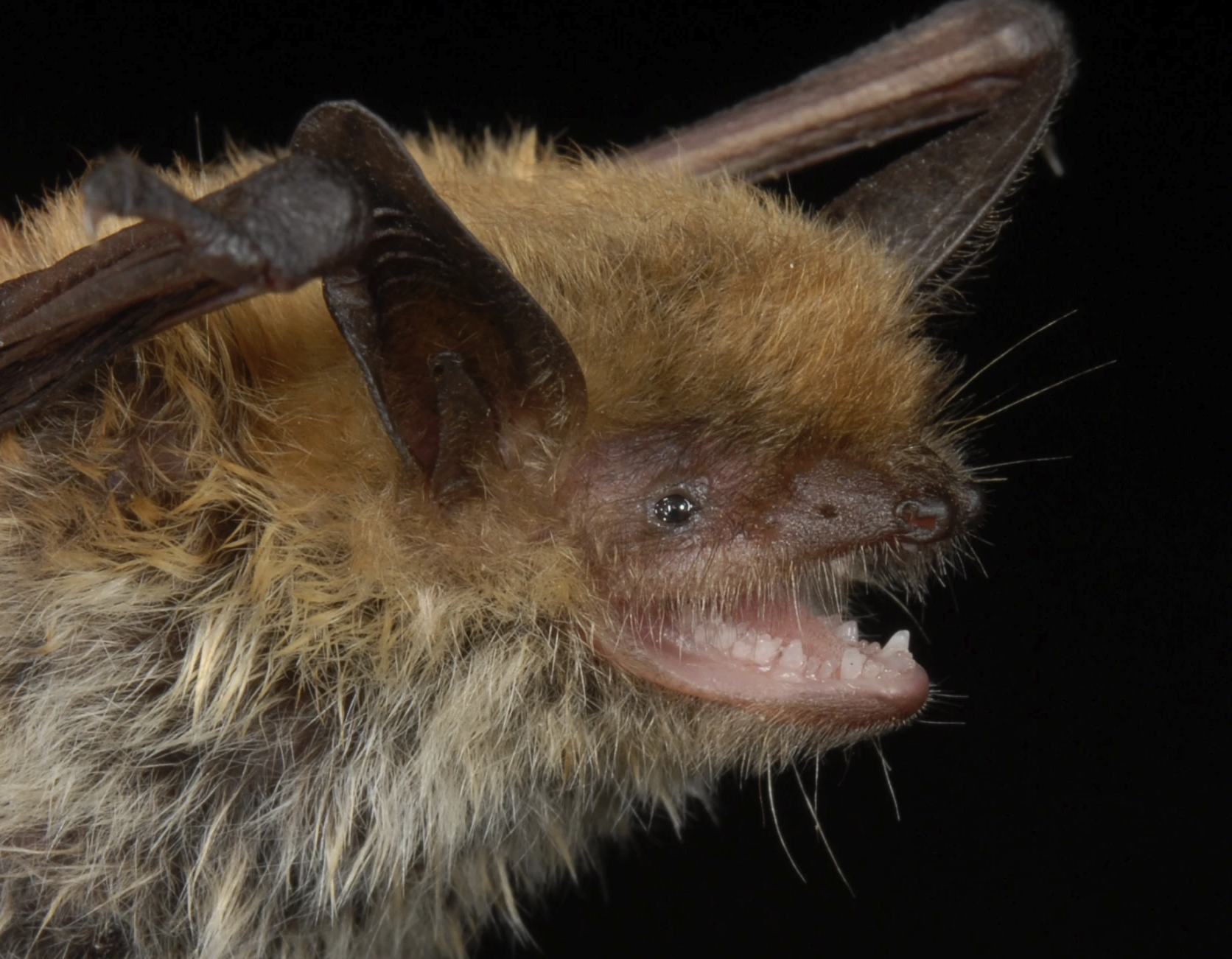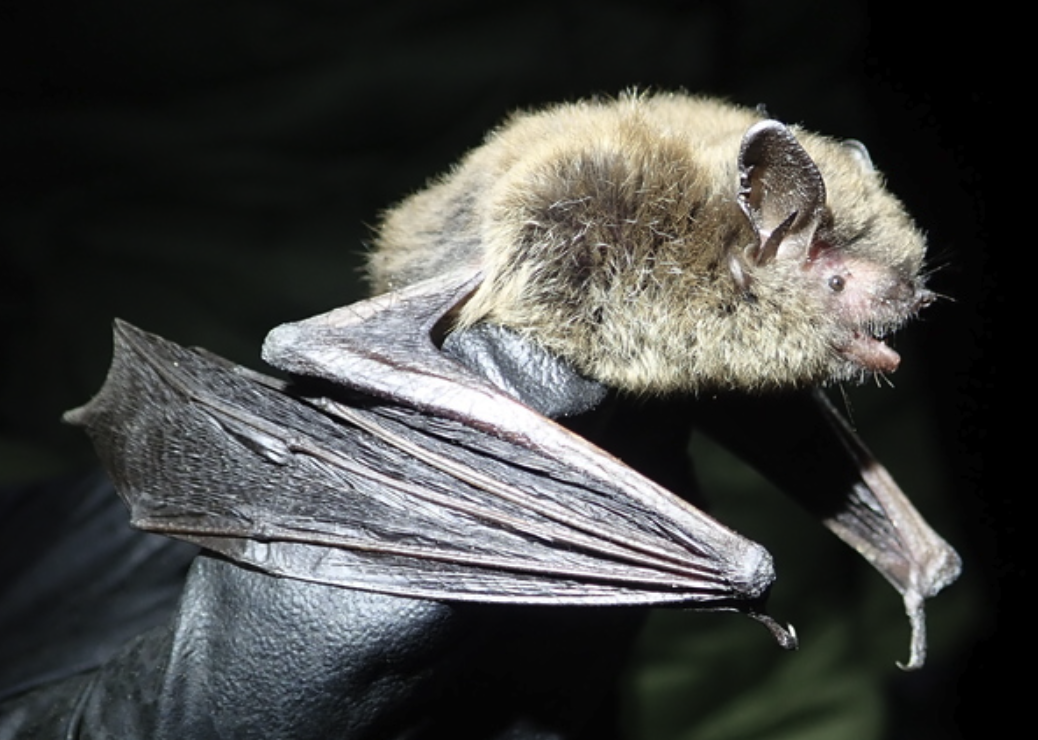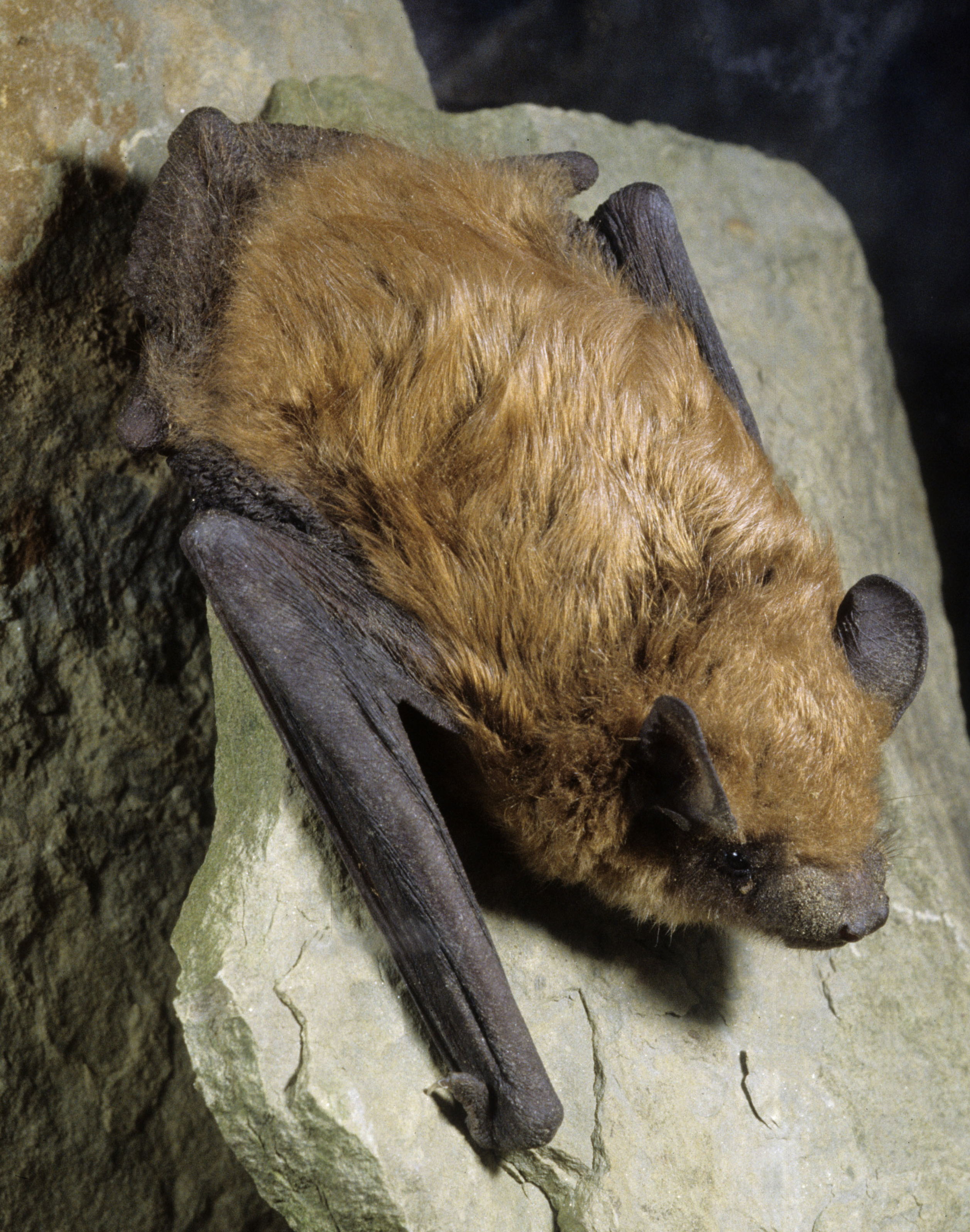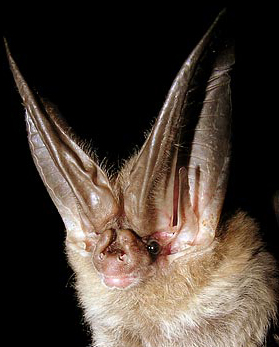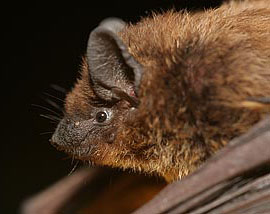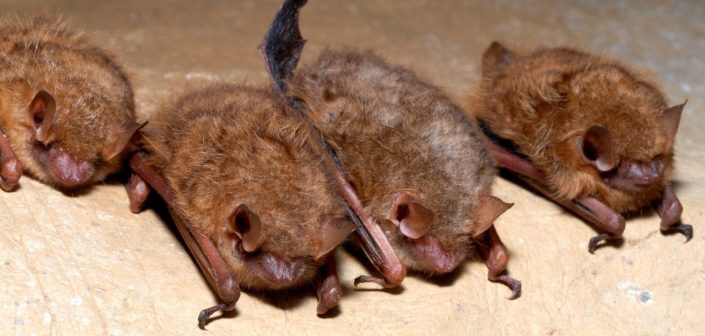
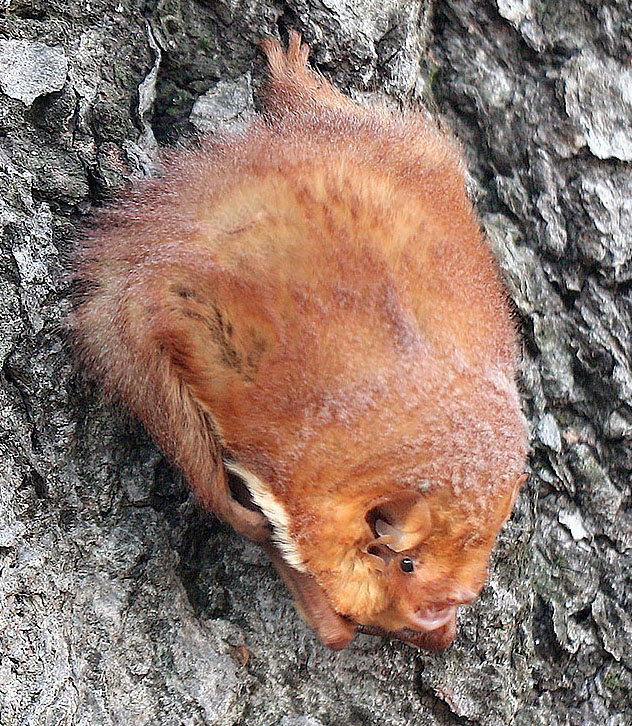
Red bat (Lasiurus borealis) - Migratory, common
This is a solitary tree-roosting bat that is found throughout
the State during its yearly migration.
Photo: Nels Troelstrup (left), DB Yolton (right)
| Bats found in South Dakota Our thirteen species of bats are small, insectivorous, and have voracious appetites. They feed upon moths, beetles, and other night flying insects, consuming up to half their body weight in insects each night. While larger bat species tend to prefer larger insect prey, and some of bats are beetle specialists, their menu always depends on which insects are available, on a particular night, at a particular time of the year. What is true in an urban area is likely to be different for rural areas. However, a great abundance of any type of insect can result in quick and easy meals with a minimum of effort. This can be very important if you are a lactating bat (generating milk for a pup) or a young bat trying to put on enough weight to survive your first winter. Bats are effective at controlling insect pests, whether it is over farmland or in your backyard. For example, we documented that one bat returned to its roost after feeding on insects for two hours - its body weight had increased 45% Such is not uncommon and nursing females may go out several times a night. Predictably, bat roosts are often found in close proximity to specific habitat types or water sources where insects breed. This shortens the distance that mothers need to fly while nursing a pup that is not yet able to fly. The effectiveness of bats at controlling mosquito populations depends upon who you ask. At a large maternity roost of Myotis lucifugus (Little Brown Bat) near Buffalo, SD, the property owners swore they had not seen any mosquitoes while surrounding ranchers (who did not have nearby roosts) complained of it being a bad year for mosquitoes. That being said, there are larger, more nutritious, and more easily caught insects flying around and the ‘bang-for-the-buck’ approach would suggest that bats should go after high-value prey, rather than the probably more abundant mosquitos. Should I put up a bat house? Questionable information about bats and these artificial roosts are provided by folks who are trying to sell you a bat house – buyer-beware. Research continues to refine bat house designs and their effective placement. |
| Common name | Scientific name (explanations here) | ASM | WBG | East river |
West river |
| Red bat | Lasiurus borealis borealis (Muller, 1776 ) | Yes | Yes | ||
| Hoary bat | Lasiurus cinereus cinereus (Palisot de Beauvios, 1796) | Yes | Yes | ||
| Silver-haired bat | Lasionycteris noctivagans (Le Conte, 1831) | Yes | Yes | ||
| Northern long-eared Myotis | Myotis (keeni) septentrionalis (van Zyll de Jong, 1979) | Yes | Yes | ||
| Little brown Myotis | Myotis lucifugus carissima (Thomas 1904) | (Yes) | Yes | ||
| Myotis lucifugus lucifugus (le Conte 1831) | Yes | (Yes) | |||
| Western small-footed bat | Myotis (leibii) ciliolabrum (van Zyll de Jong, 1984) | Yes | Yes | ||
| Black Hills Fringed Myotis | Myotis thysanodes pahasapensis(Jones and Genoways, 1967) | Yes | |||
| Western long-eared Myotis | Myotis evotis evotis (Allen, 1864) | Yes | |||
| Long-legged Myotis | Myotis volans interior (Miller, 1914) | Yes | |||
| Big brown bat | Eptesicus fuscus pallidus (Young 1908) | (Yes) | Yes | ||
| Eptesicus fuscus fuscus (Palisot de Beauvois, 1796) | Yes | (Yes) | |||
| Townsend's big-eared bat | Corynorhinus townsendii pallescens (Tumlison and Douglas, 1992) | Yes | |||
| Evening bat | Nycticeius humeralis humeralis (Rafinesque 1819) | Yes | |||
| Tricolored bat | Perimyotis (Pipistrellus) subflavus subflavus (Cuvier 1832) | Yes | Yes | ||
| Possibly found in South Dakota | |||||
| Indiana bat | Myotis sodalis (Miller and Allen 1928) | ||||
| Mexican Free-tailed bat | Tadarida brasiliensis mexicana (Saint-Hilaire 1824) | ||||
| Pallid bat | Antrozous pallidus pallidus (Allen 1862) | ||||
| Spotted bat | Euderma maculatum (Allen 1891) |


